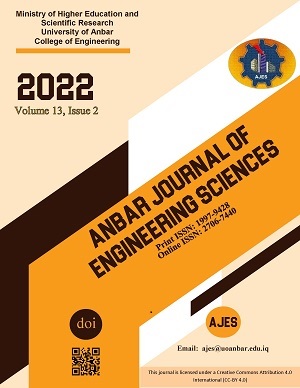Abstract
The most common type of abrasive water jet is known as a valuable and advanced non-traditional machining operation due to its no heat-affected zone, best in removing material, very environmentally friendly, and no mechanical stresses. This paper gives an idea about Abrasive water jets in terms of applications, advantages, and limitations. Also illustrates the influence of the parameters on the material removal rate. The effect of feed rate, pressure, and stand-off distance were worked, at three levels for material removal rate (MRR) to machining Aluminium alloy type-5083 by using a tool consisting of a mixture of 70% water and 30% abrasives of red garnet. The distance of the standoff has the most significant impact on the rate of material removal, which is subsequently followed by the feed rate and finally the pressure. The findings demonstrated that the Taguchi model is capable of making accurate predictions regarding the machining reactions, with a rate of material removal of 93.3%.
